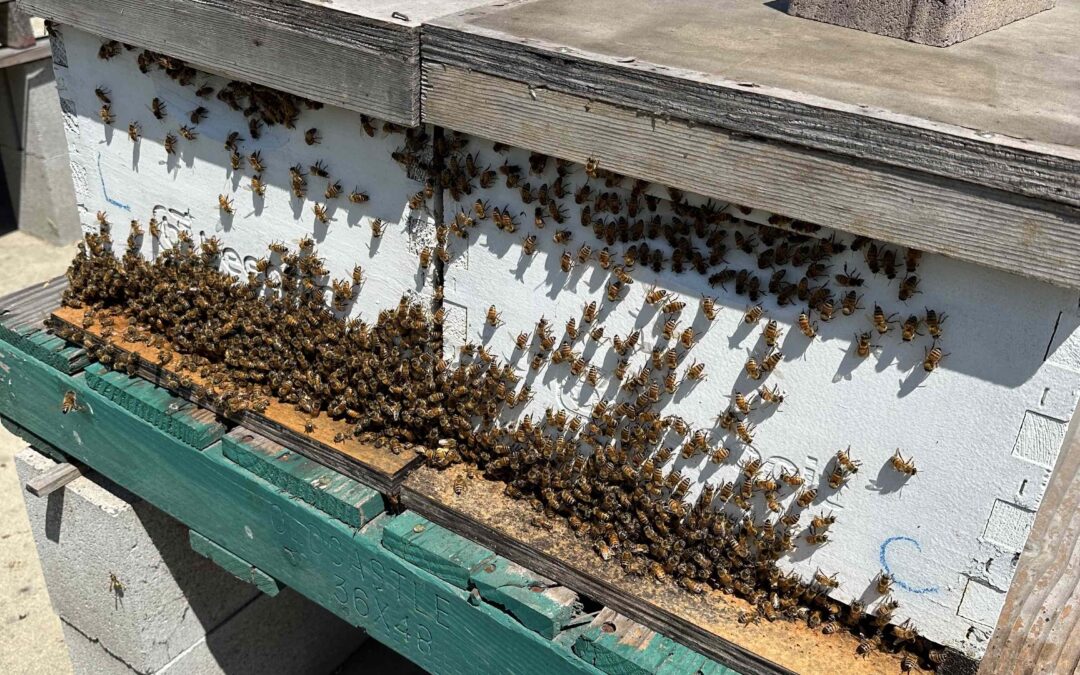In August, beehive management is crucial to ensure the health and productivity of your honeybee colony in Northern California. Here are some essential tasks you should consider for your beehive during this month:
- Regular Hive Inspections: Conduct regular inspections to check the overall health of the colony. Look for signs of disease, pests (yellow jackets, ants), and any issues with the hive’s structure. Ensure the hive has enough space for brood and honey storage.
- Monitor Mite Levels: Varroa mites can be a significant threat to honeybee colonies. Monitor mite levels and treat the hive if necessary. Integrated Pest Management (IPM) strategies can help control mite populations without harming the bees.
- Water Supply: Ensure a reliable water source is available near the hive. Bees need water to maintain hive humidity and to cool the hive during hot weather.
- Provide Ventilation: Northern California can experience hot summer days, so make sure the hive has adequate ventilation to prevent overheating. You can add upper entrances to improve airflow.
- Super Management: If your hive is thriving and expanding, consider adding supers (additional boxes) to provide extra space for honey storage. This will prevent the bees from feeling crowded and will promote honey production.
- Harvesting Honey: Depending on your region and the strength of your colony, you may be able to start harvesting honey in August. However, make sure to leave enough honey for the bees to survive the winter.
- Swarm Prevention: August is still a season when swarming may occur. Check for signs of swarming (queen cells) during your inspections, and take preventive measures to avoid losing a swarm.
- Feeding: If the nectar flow is low or inconsistent, consider supplementing the hive with sugar syrup to ensure the bees have enough food stores for the upcoming winter.
- Keep an Eye on the Weather: Be prepared for potential wildfires, as they can be a hazard to both your beehives and the surrounding environment. Keep yourself informed about any fire warnings and take necessary precautions.
Remember that beekeeping practices can vary depending on your specific location and the condition of your hive. It’s essential to stay informed about local conditions and consult with experienced beekeepers in your area for more tailored advice.

